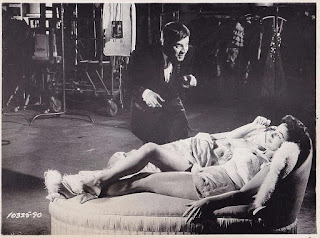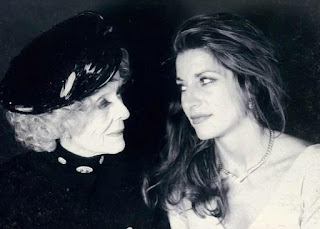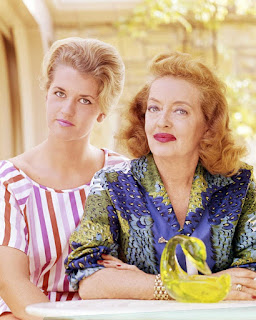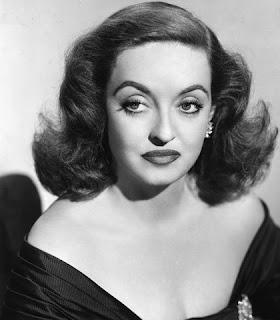There is a case for saying that Joe DiMaggio, Marilyn Monroe's second husband, was humiliated on account of the shoot when she is standing on a subway grate and her dress is being blown up in the air and she is trying to hold it down. There was some kind of deal that the dress wouldn’t go up too high. And then it’s in her face. She is exposed. But it is DiMaggio – coming from a working-class Italian-American family – who feels humiliated. She belonged to him and yet here she is seemingly available to all the world. That marriage was never going to work out. You would think that marriage to Arthur Miller would have suited her better. Author of Death of a Salesman, and scriptwriter on The Misfits (her final film), he was also one of the ace intellectuals of his era. “Egghead Weds Hourglass”, read the headline in Variety. In reality, she, the child of 20th Century Fox, was a would-be intellectual. She was certainly no airhead, no kind of “bimbo”. You would think the Monroe-Miller combination ought to have been workable. But it didn’t. Because Miller really needed a bimbo. He didn’t want to be married to an earnest undergraduate. He wanted an All-American Girl to symbolically get him off the hook of the McCarthy black list, that had him branded as a communist and Jewish to boot. Maybe Monroe could save him. But she needed him to save her. —"The pain of character assassination in the public eye" (2018) by Andy Martin
Western society has all the symptoms of a declining civilization. When sexual freedom becomes totally unrestricted, society becomes unstable and collapses. Joseph Daniel Unwin studied 80 tribes and 6 civilizations through 5,000 years of history and found a positive correlation between the cultural achievement of a people and the sexual restraint they observe. Sex and Culture was praised by Aldous Huxley: "Unwin's conclusions may be summed up as follows. All human societies are in one or another of four cultural conditions: zoistic, manistic, deistic, rationalistic. Of these societies the zoistic displays the least amount of mental and social energy, the rationalistic the most. Investigation shows that the societies exhibiting the least amount of energy are those where the opportunities for sexual indulgence are the greatest." According to Unwin, after a nation becomes prosperous it becomes increasingly liberal with regard to sexual morality and as a result loses its cohesion, its impetus and its purpose. The effect, says the author, is irrevocable. JD Unwin also infers that legal equality between women and men is necessary to institute before absolute monogamy is instituted, otherwise the monogamy will erode in the name of emancipating women. One can choose to see Unwin’s work as the foretelling of a doomed American civilization. Whatever the case, the importance of sexual morality in everyday life should not be overlooked due to its strong correlation with civilizational flourishing. Sexual restraint and ethics are not products of an ancient past that progress can suddenly replace; they are arguably the lynchpin of all of the technological and scientific progress of today. Source: ethikapolitika.org
“A threedimensional philosophy, including a regard for the past and a care for the future, is characteristic of developed virile minds; a two-dimensional outlook, implying an exclusive regard for the present, suggests either a lack of development or a state of degeneracy. The introduction of an irregular continence into a society accustomed to sexual freedom is the most important and the most painful of all social revolutions. In the 16th century England, when the aristocrats modified their absolute monogamy, they had lost their supremacy to the rising middle classes, who preserved absolute monogamy. Nominally until the 19th century marriage was indissoluble; but throughout their history the English were casuists in any matter which concerned the relation between husband and wife, and, by passing a special bill through a parliament which they dominated, the nobles proclaimed the dissolution of the indissoluble bond. Towards the middle of the twentieth century some failure of nerve was apparent throughout the society; there were signs, too, that the middle classes were losing their supremacy. No further records are available, and the productive energy of the English remained tremendous, for sexual intercourse and divorce by mutual consent had not become part of the inherited tradition of a complete new generation. Indeed the majority of the population still insisted on some degree of compulsory continence. Evidence is not lacking, however, that such customs were falling into desuetude. After great social energy has been displayed in a civilization, new and alien elements appear. The society begins to discriminate between the slovenly and the elegant, between the vague and the exact. When an atom emits energy, the outer electrons seem to jump down a quantum or a number of quanta; finally they are locked against the nucleus; and what was once a massive event of low density becomes a small event of high density. When a human society radiates energy, precisely the opposite occurs. We begin with a society in which all the individuals are locked together by forces we do not understand; such a society displays no energy; but, as soon as we energize it, individuals begin to leave the nucleus, and form, as it were, an energetic belt around it, the behaviour of this belt determining the cultural condition of the society. If the society is energized again, more individuals leave the nucleus and join the outer belt; others leave the belt itself, assume still newer modes of behaviour, and form a second belt, this belt in its turn determining the cultural condition of the society. And the more energy a society displays, the greater is the cultural distance between the outer belts and the original nucleus, which, indeed, may even be disintegrated. If any society should desire to control its cultural destiny, to display its productive energy for a long time, and even forever, it must re-create itself, first, by placing the sexes on a level of complete legal equality, and then by altering its economic and social organization in such a way as to render it both possible and tolerable for sexual opportunity to remain at a minimum for an extended period, and even forever. In such a case the face of the society would be set in the direction of the Cultural Process; its inherited tradition would be continually enriched; it would achieve a higher culture than has yet been attained; by the action of human entropy its tradition would be augmented and refined.” —"Sex and culture" (1934) by JD Unwin
Jerry Lewis talked about the inherent intelligence involved in comedy. Comedy is a grid of unsuspected associations; the synaptic leaps are corrosive abstractions, no less than in social or biological science. Jerry explained that it was crucial for him to “present himself as a good man,” that he seeks to be funny for people who share his values, for “people who understand you.” Gregg Barson, director of the documentary Method to the Madness of Jerry Lewis, wisely spoke about the liberating power of playing in disguise—“He was able to look at Jekyll and Hyde and see that, hey, that’s funny, that you can be this double life”—and showed a clip of “The Family Jewels.” For Lewis, the doubleness inhered in the process. He spoke not of directing himself but of directing “Jerry”—as soon as he went on-camera, he became a character, but one who drew on his own inner being. He was, from the start, a double, himself in disguise. I’ve long considered Jerry Lewis to be a radical democrat—revealing the most humiliating, debasing incompetence, awkwardness and servility that may mark his most modest of viewers, and extracting from these burdens the radiance of virtue and even a miraculous power. There’s an extra level of pathos to Lewis’s career—its truncation. Asked by David Susskind in 1964 TV how he connected with “millions of people,” Lewis answers: “You have to be one of the millions of people.” And, in response to the link between comedy and tragedy, Lewis said: “I think that it’s quite sad the mere fact that you walk out in front of an audience. There is a sad connotation to the fact that you say, 'Ladies and gentlemen, watch me, I’m going to show off.' Well, that’s pretty sad, having to do that.” The great paradox—the one from “The Nutty Professor”—is that Lewis distinguishes his comic persona, Jerry, from himself. It’s the suave incarnation of Buddy Love that renders him attractive, but it’s the pathetically overlooked nebbish who, via Lewis’s fearlessly self-revealing, even self-abasing artistry, gives him the symbolic feet on the ground that renders his milieu of Hollywood universally touching and ordinary. —"Jerry Lewis and Buddy Love" (2012) by Richard Brody
The dancer in the white room of The Ladies Man (1961) Sylvia Lewis who played 'Miss Cartilage' remembers: “I got a call from Jerry to come talk to him about working in ‘The Ladies Man’ and he signed me to do it. I spent 11 weeks on the set, just hanging around hoping to get 10 minutes with him to begin rehearsing. But it never happened until towards the end of shooting, even though I was paid for being at the studio every day. He was always very kind and respectful to me. In fact, I can say during my Hollywood years I was never treated better by anyone. I just remember Jerry telling me about how he would get visions in his head when we worked together.” The late Secretary of Defense Leslie Aspin, then a congressman from Wisconsin (known for his opposition to the war in Vietnam), penned these words in 1977 in the conclusion of his nomination of Jerry Lewis for the Nobel Peace Prize: “Jerry Lewis is a man for all seasons, all people and all times. His name has, in the hearts of millions, become synonymous with peace, love and brotherhood.” Source: blog.tvstoreonline.com






























































